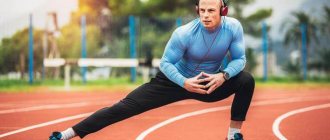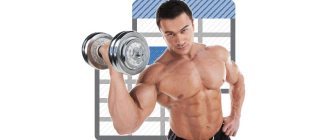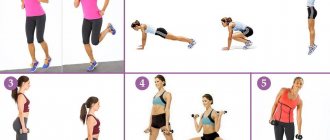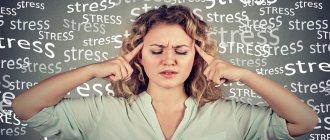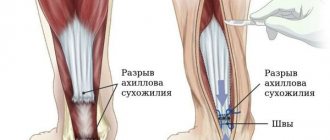How to recover faster after a hard workout in the gym - take medications, go for special procedures, or just give the body a rest? In this article we will describe the most common methods of muscle recovery. But first, let's talk about how the body reacts to training and how to behave after heavy loads.
What is body restoration?
The human body is a complex system that monitors and regulates its own condition. At rest and during light loads, all processes proceed at a normal pace. But the load forces you to use reserve energy reserves to ensure normal functioning of the body during heavy exercise.
During exercise, the production of cortisol increases, which destroys muscles, and it is because of this that soreness appears. Thus, training takes up a huge amount of reserves, which now have to be restored. That is, it is necessary to return the original anatomical, physiological and biochemical state that was originally.
The body itself hints what needs to be done to recover. You may notice that after training you want to eat more and sleep longer. Indeed, nutrition and rest are important components of a harmonious and complete recovery.
After physical activity, the body also prepares for more serious loads, which is expressed in an increase in muscle mass. And the stronger the previous load, the more thorough this preparation. This is why training at the edge of your capabilities is the most effective. Endurance increases not during sports, but during the rest period. This is why it is so important to be able to recover properly after training.
Go for a massage
A half-hour massage session immediately or within two hours after exercise reduces delayed-onset muscle pain in An Evidence-Based Approach for Choosing Post-exercise Recovery Techniques to Reduce Markers of Muscle Damage, Soreness, Fatigue, and Inflammation: A Systematic Review With Meta-Analysis next 24–72 hours. After a massage, the level of circulating cortisol (stress hormone) decreases and the concentration of beta-endorphins, our body’s natural analgesics, increases by 16%. As a result, you feel less fatigue and pain.
Moreover, after the session, people’s concentrations of creatine phosphokinase and interleukins, markers of inflammation and muscle damage, decrease. That is, massage helps reduce inflammation in the muscles after exercise and restore strength faster Recovery after exercise: what is the current state of play? .
Recovery stages
The body recovers gradually, in four phases:
- Fast recovery. Lasts approximately 30 minutes after the end of the workout. At this time, severe hunger usually occurs, as the body strives to replenish its supply of nutrients as quickly as possible.
- Slow recovery. At this stage, the regeneration of tissues and cells begins, the water-electrolyte balance returns to normal and the substances that came with food are actively absorbed. They will become the building material for new muscle tissue. Enzyme, protein and amino acid synthesis are also launched.
- Supercompensation phase. It occurs approximately on the third day after heavy exercise and ends on the fifth day. During this period, an increase in physical indicators is observed, that is, the body is preparing for new loads. The next session must be carried out before the supercompensation phase ends.
- Delayed recovery. Occurs after supercompensation if the athlete stops visiting a fitness club or gym. During the process of delayed recovery, the body returns to the same shape it was in before starting training, which is why it is so important not to skip training.
How long does it take to recover after training?
There are several phases of the muscle recovery process.
- The first phase begins immediately after the end of the workout and lasts about an hour. At this time, the body especially needs nutrients, necessary not only for further muscle growth, but also for replenishing energy reserves, after significant expenses. Therefore, during this period it is important to consume food and sports supplements based on proteins (amino acids) and carbohydrates. But this is only a partial recovery.
- Full muscle recovery can take anywhere from two to five days, and the larger the muscles trained, the longer they take to recover . For example, small muscle groups such as biceps, triceps are restored in 1-2 days, medium and large muscles: back, chest, legs, deltoids up to 4-5 days. Although the duration of healing as a result of damage to muscle fibers depends on the resulting microtraumas. The recovery process also depends on the individual metabolic rate.
How to behave during the recovery period
Here are the basic tips to follow so as not to interfere with the body's natural recovery:
- Avoid stress. Psychological comfort contributes to full physical recovery. If troubles do happen, then relaxation and meditation help to cope with them.
- Follow the regime. Get up and go to bed at the same time. Eating should also be regular - you shouldn’t skip meals during the day and then gorge yourself before bed.
- Sleep at least 8 hours a day, preferably 9-10. Sleep should be comfortable and uninterrupted.
- Avoid scheduling workouts in the early morning and late evening—just before or after bedtime. The body needs to wake up and prepare for stress, this needs at least an hour.
- Get plenty of rest during the day. Allow yourself to completely relax for at least 15 minutes and forget about the work process and problems. The lower the voltage, the better.
Orthopedic corsets
Wearing orthopedic braces is an important requirement for patients undergoing spinal surgery. Their use will ensure successful rehabilitation by unloading and protecting the weak part from possible damage during physical activity. But immobilization devices must be worn strictly for the time prescribed by the doctor (no longer), usually 3-6 hours a day, since immobilization of a particular area for too long can provoke muscle atrophy. The duration of use of corsets is different for all people, it all depends on the severity of the surgical session. After major interventions, you may need to use such a product for at least 6 months, and after simple operations - on average 1-2 months.
Example of a corset.
How to understand that muscles have recovered
There are three main signs:
- A surge of strength, a general increase in energy.
- Noticeable reduction or complete absence of muscle pain.
- High motivation for further sports and other activities during the day.
To clearly understand that the recovery process is going correctly, a combination of the listed signs is necessary with constant progress - an increase in muscle mass and the ability to withstand increasingly greater loads. In order for the body to fully recover, it is necessary to accurately assess the level of permissible loads during each workout and especially at the very beginning of sports.
Club "Mango" offers, which will help determine what condition the muscles are in and what exactly needs to be done so as not to be overloaded during the training process and get the maximum effect.
Muscle pain after exercise
Diabetes
13220 03 March
IMPORTANT!
The information in this section cannot be used for self-diagnosis and self-treatment.
In case of pain or other exacerbation of the disease, diagnostic tests should be prescribed only by the attending physician. To make a diagnosis and properly prescribe treatment, you should contact your doctor. Muscle pain: causes of occurrence, what diseases it occurs with, diagnosis and treatment methods.
Definition
Muscle pain that occurs after physical activity is called sore throat. Soreness is a kind of indicator of stress on the muscles - the stronger the post-workout pain, the more stress the muscles experienced.
Types of muscle pain after exercise
There are several types of pain that occur after training:
- moderate post-workout muscle pain - appears the day after training, has a pulling nature and intensifies when the corresponding muscle contracts or stretches;
- delayed muscle pain - develops 2-3 days after training, has a strong aching character;
- traumatic muscle pain - occurs during exercise, immediately after or the next day, is acute and constraining in nature.
Possible causes of muscle pain after physical activity When
muscles contract, they consume oxygen, which is necessary for their effective functioning - the more intense and frequent the contractions, the more oxygen is required by muscle cells (myocytes).
If muscles experience hypoxia (lack of oxygen), then another method of “extracting” energy is activated – anaerobic glycolysis.
Anaerobic glycolysis is the process of energy production by body cells through various transformations of glucose with the release of adenosine triphosphate (ATP), occurring under anaerobic (oxygen-free) conditions. In other words, as a result of the breakdown of glucose, a certain amount of ATP molecules are released, which provide energy, and lactic acid (lactate), the excess of which leads to muscle soreness after exercise.
The lactate content in the cells of a healthy person ranges from 0.6 to 1.3 mmol/l; this indicator is used to evaluate the quality and intensity of muscle oxygen saturation and the quality of carbohydrate metabolism. In some diseases accompanied by seizures, lactate levels are higher than normal.
Lactic acid is normally found in the cells of the liver, brain, muscles, heart and other organs.
In the liver, the process of reverse glycolysis occurs - a chain of chemical reactions, as a result of which glucose is obtained from lactic acid, which is used for further transformations to produce energy.
Another cause of pain after physical activity is muscle microtrauma. More often they occur in people who exercise irregularly. In an untrained person, the muscle fibers contain myofibrils (the main contractile elements of muscles) of different lengths - short and long. During eccentric exercise (when tense muscles lengthen under load), the short myofibrils are torn.
What diseases can cause muscle pain?
Lactic acid can accumulate not only in people who exercise occasionally. Lactate levels increase in a number of diseases - such as diabetes mellitus, kidney damage, leukemia, sepsis, acute blood loss, etc.
A pathologically high level of lactic acid leads to the development of such a life-threatening condition as lactic acidosis, as a result of which the acidity of the body’s environment changes, which leads to disruption of the functions of all systems and organs at the cellular level.
Which doctors should I contact for muscle pain?
Before you start visiting a gym or fitness center, it is advisable to undergo a preventive examination and take a series of blood tests.
If any pathology is detected, the intensity of training, its volume, duration and frequency should definitely be discussed with a fitness instructor or sports medicine doctor.
Diagnosis and examinations for muscle pain
As a rule, muscle pain goes away on its own after training. However, a preventive examination and research results will allow a trainer or fitness instructor to adjust individual training, preventing the development of muscle pain.
For the convenience of patients, the INVITRO laboratory has developed special sets of examinations for men and women of different age groups (men over 25 years old, over 40 years old, over 50 years old; women over 25 years old, ), which include examinations by specialists and certain tests to evaluate the work body and identify the presence or risk of developing diseases of the bronchopulmonary, cardiovascular, endocrine and other systems.
What to do if you experience muscle pain after exercise?
A lack of microelements in people involved in sports can cause a malfunction of organ systems. There are a number of screening examinations that allow timely identification and replenishment of the level of missing substances.
